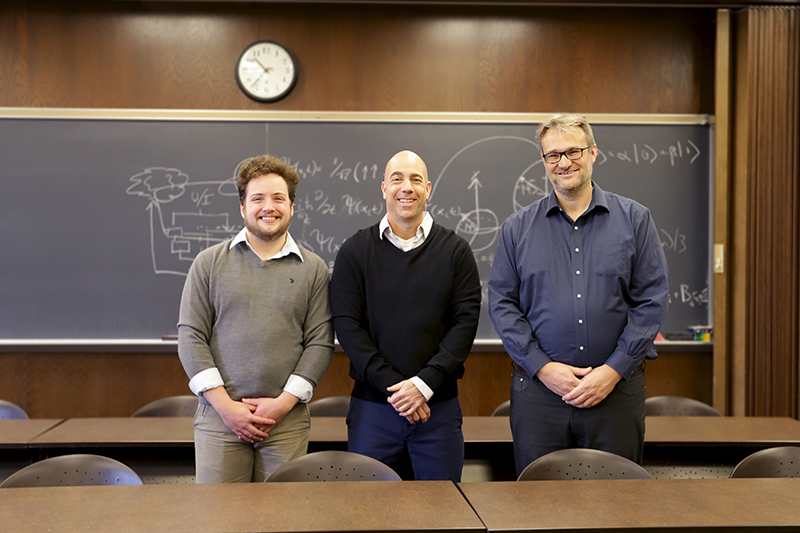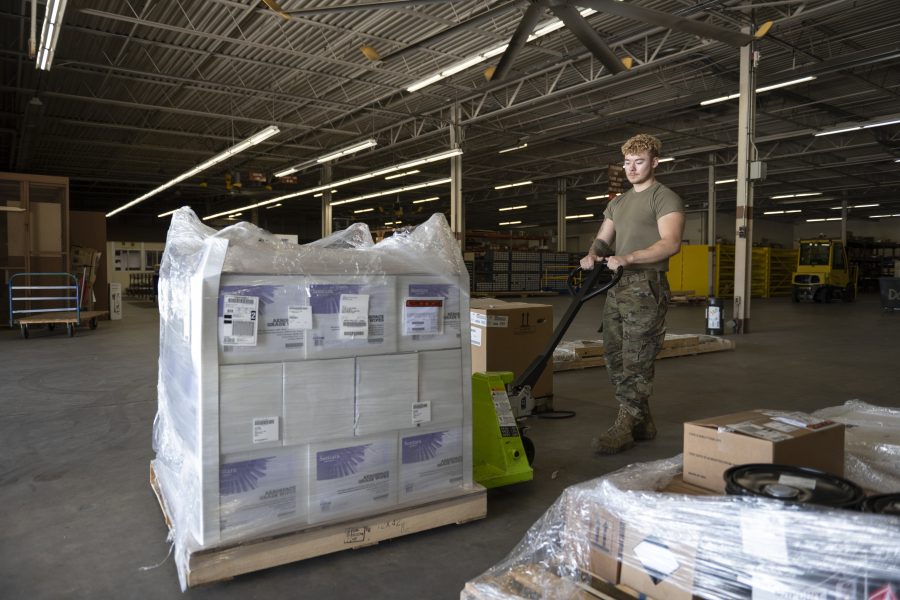The Department of the Air Force awarded a three-year, $2.5 million contract last week to Quantum Research Sciences for what the company says is the Pentagon’s first ever “operational, production-level quantum computing software.”
The software is designed for supply chain inventory management—in other words, how the Air Force buys, stocks, and ships spare parts.
Managing tens of millions of part numbers and ensuring constant availability of items as aircraft age is a crucial and demanding challenge for Air Force logisticians and maintainers.
“Not having adequate inventory puts stress on industrial and supplier sourcing processes, while excess inventory has costs associated with storage, security, maintenance, theft and design obsolescence,” Curtis Mears, director of the Ai Force’s 418th Supply Chain Management Squadron, said in a release from Purdue University, which is affiliated with Quantum Research Sciences.
The Air Force wants to better forecast not only what parts it needs, but how many and where they should be stored. It is transitioning from its D200A legacy supply chain management system to something new, called ESCAPE for Enterprise Supply Chain Analysis, Planning, and Execution program.
Quantum computing can help because classical computing is inherently limited, said QRS CEO Ethan Krimins.
“At best, a supply chain forecast is an educated guess,” he said. “At worst, it is a wild guess.”
Heather Penney, senior research fellow at the Mitchell Institute for Aerospace Studies, said supply chain management is an ideal use cases for quantum computing, give its vast data sets and variables.
“Quantum computers are not just super-fast supercomputers—they’re optimized for specific problem sets,” Penney told told Air & Space Forces Magazine. “This optimization problem, especially with multi-variables, is one of those types of problems that quantum computers are uniquely suited for.”
Penney recently authored a Mitchell Institute study on quantum. In it, she explains that conventional computing is built on binary “bits,” essentially switches that can be either in either an on or off, one or zero state. Quantum, however, uses qubits, which can exist in any of three states: powered, off, or superposition, a combination. Qubits enable entanglement, a “property that allows two qubits to be ‘linked’ together beyond what is possible in classical systems,” according to a report from consulting firm Ernst & Young.
These qualities mean “quantum computers are excellent at optimization: quickly identifying the most efficient solution in a complex situation,” Chris McCorkle, 418th Data Science and Analysis Flight chief, said in a release.
But while quantum computers have tremendous processing power, they need specialized software code. That’s where QRS comes in.
“You don’t write code for a quantum computer the same way that you write code for a traditional computer,” Penney said. “They’re developing code specifically for this problem with different logic, with different gates. So it is really leading-edge stuff.”

QRS claims its software is producing projections for supply chain management that are 28 percent more accurate than classical computers. Over the past three years, QRS has worked the problem for the Air Force under Phase I, Phase II, and now Phase III Small Business Technology Transfer contracts, with the latest deal shifting from prototype to commercialization.
The Air Force is casting a wide net in quantum computing. In a sweeping announcement to industry in May 2023, the Air Force Research Laboratory said it hoped to spend up to $500 million on quantum-related projects in the next five years, and three months later, opened an “Extreme Computing Facility” with quantum in mind.
